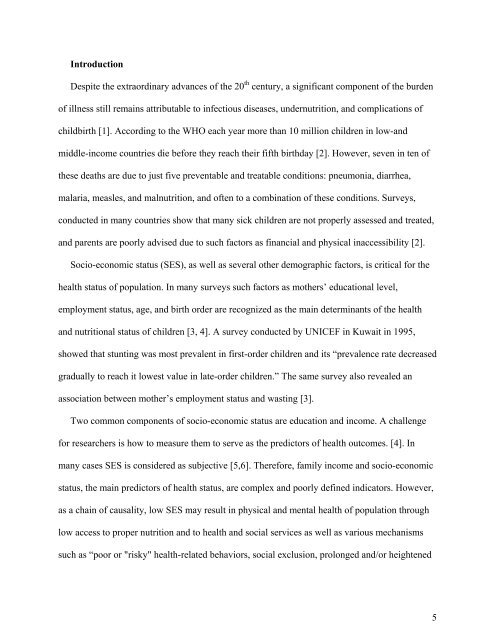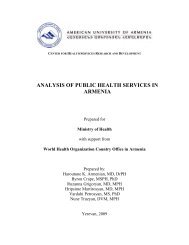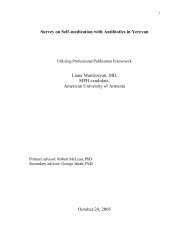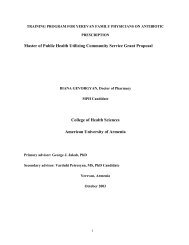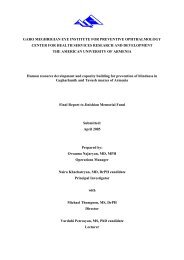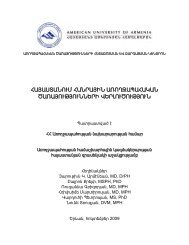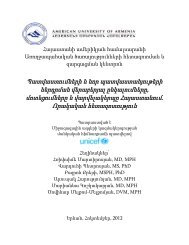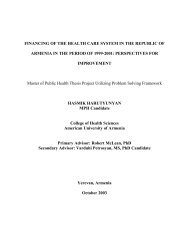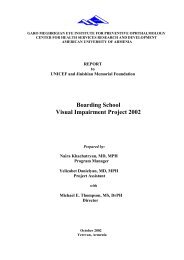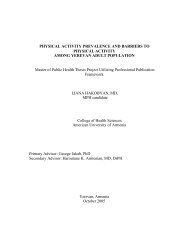A M E R I C A N U N I V E R S I T Y O F A R M E N I A - CHSR
A M E R I C A N U N I V E R S I T Y O F A R M E N I A - CHSR
A M E R I C A N U N I V E R S I T Y O F A R M E N I A - CHSR
Create successful ePaper yourself
Turn your PDF publications into a flip-book with our unique Google optimized e-Paper software.
Introduction<br />
Despite the extraordinary advances of the 20 th century, a significant component of the burden<br />
of illness still remains attributable to infectious diseases, undernutrition, and complications of<br />
childbirth [1]. According to the WHO each year more than 10 million children in low-and<br />
middle-income countries die before they reach their fifth birthday [2]. However, seven in ten of<br />
these deaths are due to just five preventable and treatable conditions: pneumonia, diarrhea,<br />
malaria, measles, and malnutrition, and often to a combination of these conditions. Surveys,<br />
conducted in many countries show that many sick children are not properly assessed and treated,<br />
and parents are poorly advised due to such factors as financial and physical inaccessibility [2].<br />
Socio-economic status (SES), as well as several other demographic factors, is critical for the<br />
health status of population. In many surveys such factors as mothers’ educational level,<br />
employment status, age, and birth order are recognized as the main determinants of the health<br />
and nutritional status of children [3, 4]. A survey conducted by UNICEF in Kuwait in 1995,<br />
showed that stunting was most prevalent in first-order children and its “prevalence rate decreased<br />
gradually to reach it lowest value in late-order children.” The same survey also revealed an<br />
association between mother’s employment status and wasting [3].<br />
Two common components of socio-economic status are education and income. A challenge<br />
for researchers is how to measure them to serve as the predictors of health outcomes. [4]. In<br />
many cases SES is considered as subjective [5,6]. Therefore, family income and socio-economic<br />
status, the main predictors of health status, are complex and poorly defined indicators. However,<br />
as a chain of causality, low SES may result in physical and mental health of population through<br />
low access to proper nutrition and to health and social services as well as various mechanisms<br />
such as “poor or "risky" health-related behaviors, social exclusion, prolonged and/or heightened<br />
5


